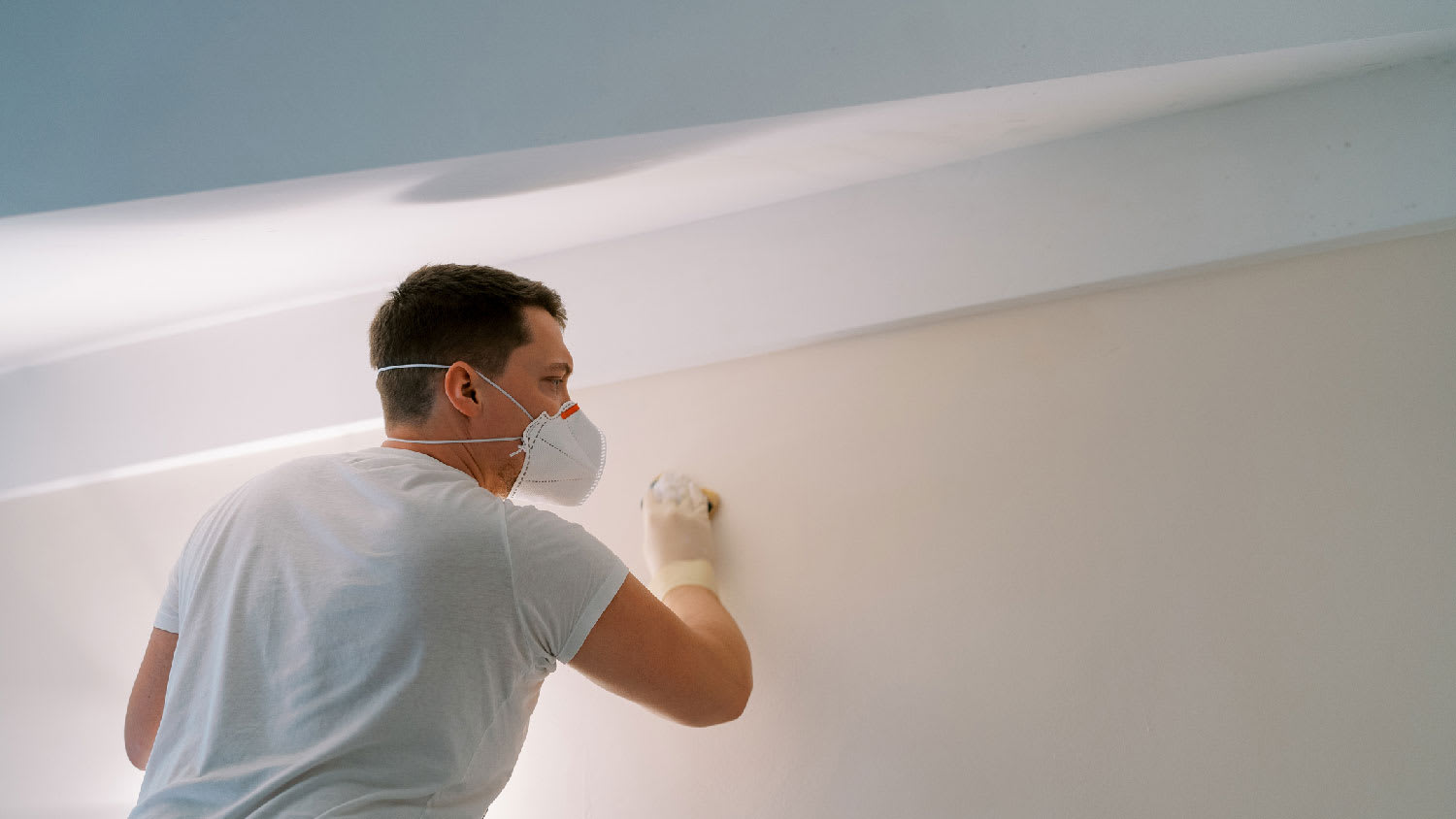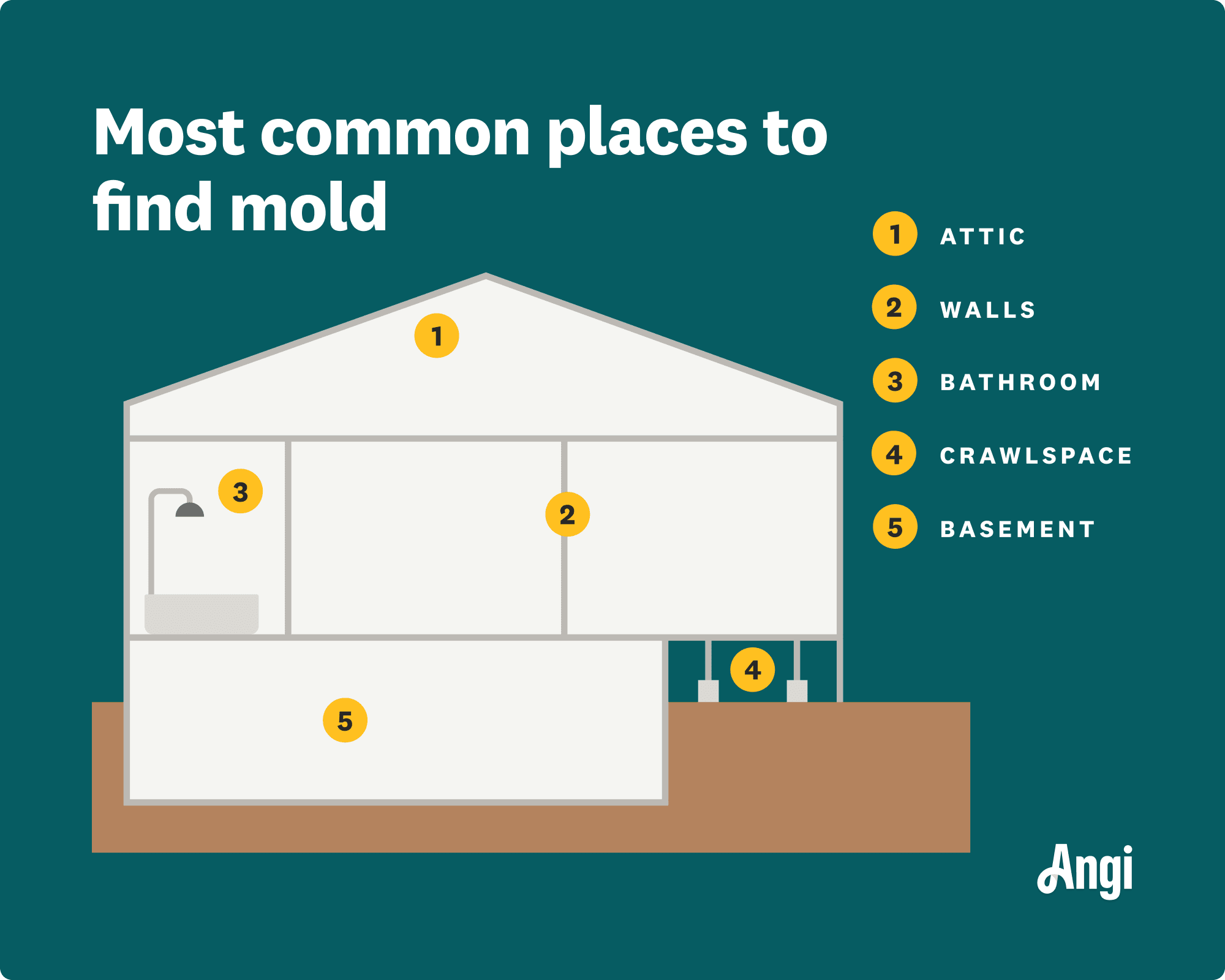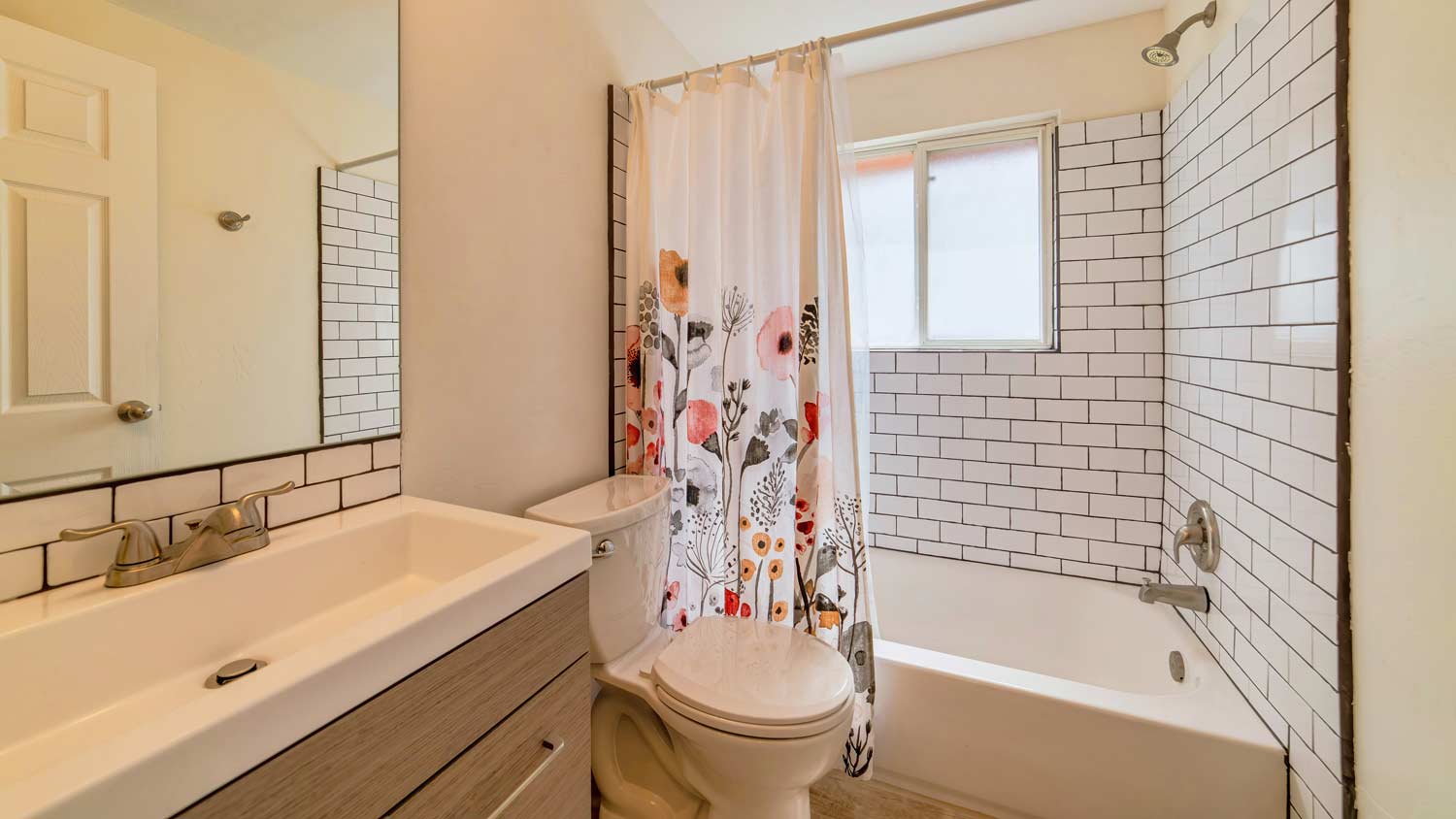
The cost of a mold inspection might seem high, but it’s one of the best investments you can make for your health and home. Read on to learn cost-saving tips.
Mold remediation costs in Atlanta, GA, cost $2,775 on average, but it can cost between $1,249 and $4,363, depending on location, type, and size of infestation.


Atlanta’s sticky summers and wild storms give mold the perfect stage to thrive.
Old brick homes and big basements love to lock in moisture for mold to feast on.
Black mold is common here and costs more to kick out safely.
Mold that wrecks walls or floors means pricey repairs on top of removal.
Even new builds can trap humidity, making mold a costly surprise.
Atlanta's humid, subtropical climate makes it a paradise for magnolias, peaches—and mold. Combine that with the city’s frequent summer thunderstorms, and it’s no wonder so many basements end up feeling more like swamps than storage or living spaces. On average, mold remediation in Atlanta, GA, runs about $2,775, with prices ranging between $1,249 and $4,363. Costs swing depending on where you live, the type of mold, and how far it spreads.
In Atlanta, GA, a few local quirks drive what you’ll pay for mold removal. The city’s older housing stock, especially mid-century brick homes and abodes with sprawling basements, can trap moisture that feeds mold growth. Newer construction isn’t immune either, since tightly sealed buildings sometimes hold in humidity. The Southeast’s warm climate, heavy rainfall, and high pollen counts also give mold spores plenty to work with.
Certain mold varieties are widespread here. Black mold often shows up in water-damaged walls and insulation, while Aspergillus and Cladosporium thrive in Atlanta’s damp basements and crawl spaces. Each type can require different treatments, adding to the overall expense.
So while general labor and materials matter, the environment, and even the style of home you own, play a big role in the cost of remediation.

It costs more to remove mold from certain areas of your home than others. For instance, mold growth in hard-to-reach areas, like in your HVAC system or drywall, can require more time and materials to remove than mold in very accessible areas, driving up costs.
| Location | Average Remediation Cost in Atlanta |
|---|---|
| Attic | $1,174–$4,696 |
| Basement | $587–$3,522 |
| Crawl space | $587–$2,348 |
| Wall | $1.174–$23,480 |
| HVAC systems | $3,522–$11,740 |
| Bathroom | $587–$1,174 |
| Whole house | $11,740–$35,220 |
Most mold removal professionals charge around $12 to $29 per square foot. So, if you're removing mold from a 100-square-foot area, you can expect to pay around $117 to $2935. But factors like where the growth is and the mold type can affect how much it costs to remove it.
Mold inspection costs between $352 and $1,262. Mold testing is key to determining whether you have the presence of mold in your home, plus the extent of the infestation. You’ll need to hire a mold inspector to test surface samples in your home before moving forward with remediation.
Regardless of how it affects remediation costs, you need to know which type of mold you have in your home for your safety. That said, if a mold test reveals the presence of black mold, your mold remediation pro will likely charge more to remove it based on the additional cost of protective equipment.
| Type of Mold | Description |
|---|---|
| Alternaria | A common mold found outside in spring and summer, it primarily attacks plants. |
| Aspergillus | White fuzz that turns black over time, but it can also be brown, yellow, and green. It can cause respiratory illness and requires immediate remediation. |
| Aureobasidium | Grows on painted surfaces and behind wallpaper. It’s often pink and causes allergies. |
| Chaetomium | Extremely toxic and can cause brain infections and various cancers. A white fuzz that turns to blue or green. Requires immediate professional removal. |
| Cladosporium | |
| Fusarium | One of the most toxic molds; requires professional removal once discovered. Often caused by water leaks, it is commonly found in walls and floors. |
| Penicillium | Blue-green and grows in areas of elevated moisture where water damage has occurred. It can be very dangerous. |
| Serpula lacrymans | Causes severe damage to wood and spreads fast. Unfortunately, this mold is usually found after it has spread widely. |
| Stachybotrys chartarum (black mold) | Extremely dangerous, not to mention fast-spreading. Requires immediate removal by a professional. |
| Trichoderma | Grows rapidly in wood, plants, and soil. Commonly found in HVAC systems and not as widely discovered as others in this list. |
| Ulocladium | A dark-colored mold found near windows and in kitchens and basements. Looks like black mold, but it isn’t as toxic to humans. Nevertheless, it still requires removal. |
If left untreated, mold can damage your drywall, carpeting, and flooring. Replacing or repairing your walls or floors will add costs to the removal.
Here are some cost estimates for different types of mold damage repairs in Atlanta, GA:
| Repair Type | Average Cost in Atlanta |
|---|---|
| Drywall | $1,174–$3,405 |
| Carpet | $910–$3,052 |
| Flooring | $235–$646 |
Bringing in the pros is often the only way to eliminate mold, but in Atlanta, GA, the final bill depends on more than just labor and materials. Local taxes, licensing, and whether the job counts as a repair or an improvement all shape what you’ll pay.
Atlanta’s cost of living sits about 4% lower than the national average, which can keep labor a bit more reasonable than in pricier metros. Specialized training, protective gear, and containment equipment still carry real costs, so pricing lands where quality and safety meet the market.
While mold inspections are not taxed, remediation is subject to the city’s 8.9% combined tax rate because it involves a service or repair. The job may be exempt if it counts as a capital improvement, such as removing and replacing damaged drywall or insulation. Homeowners must give the contractor a Certificate of Exemption for qualifying projects.
Georgia does not require a state license specifically for mold remediation. A Georgia general contractor license is required if a contractor performs general construction or repair work exceeding $2,500. Many reputable companies pursue third‑party credentials anyway, such as IICRC or ACAC certifications, to signal training, safety, and adherence to industry standards.
Professional crews carry liability insurance and bonding to protect homeowners and workers. Those protections add overhead, reflected in final pricing.
City permits may be required for large tear‑outs, rebuilds, or work inside historic districts. Also, permit fees and review timelines can extend projects and increase labor costs.
If mold has infiltrated drywall, flooring, insulation, or framing, you may also need a general contractor, carpenter, or insulation pro. Adding trades raises both labor time and materials, increasing the total.
Crawl space encapsulation experts are often brought in to seal off damp basements and prevent future growth. Expect your encapsulation costs to start at around $5,000 or more. Roofing contractors may be needed if leaks are feeding mold from above. Roof repair costs start at around $400 or more. You may discover that a foundation specialist is required to tackle ground-level cracks or moisture intrusion. Homeowners can expect foundation repair costs to start in the $2,225 range.
Fixing mold problems will eliminate the musty smell and protect your home’s value. When you remove mold from your dwelling, you protect your family’s health, seal leaks, and replace soggy insulation with fresh, energy-saving materials. The results are lower utility bills and a much more comfortable home.
Even better, spaces you once avoided, like that damp basement or stuffy attic, become usable again. You’ll also remove hidden hazards, which makes the home more livable for people of all ages. And of course, nothing beats the fresh look of new drywall, repaired finishes, and mold-free walls.
Home is the most important place on earth, which is why Angi has helped more than 150 million homeowners transform their houses into homes they adore. To help homeowners with their next project, Angi provides readers with the most accurate cost data and upholds strict editorial standards. We survey real Angi customers about their project costs to develop the pricing data you see, so you can make the best decisions for you and your home. We pair this data with research from reputable sources, including the U.S. Bureau of Labor Statistics, academic journals, market studies, and interviews with industry experts—all to ensure our prices reflect real-world projects.
Want to help us improve our cost data? Send us a recent project quote to [email protected]. Quotes and personal information will not be shared publicly.
From average costs to expert advice, get all the answers you need to get your job done.

The cost of a mold inspection might seem high, but it’s one of the best investments you can make for your health and home. Read on to learn cost-saving tips.

If you found mold on window sills in your home, keep reading to learn how to remove the mold and avoid it from forming in the future.

An orange shower curtain can be due to bacteria, hard water, or product scum. Read this guide to learn why your shower curtain is turning orange.

Worried about mold behind your drywall? Learn how to spot the signs and when it’s time to call in a professional, plus how to prevent it in the future.

Where there's moisture, there's likely to be mold. Read on for tips on how to prevent mold growth in all areas of your home.

Hardwood floors are susceptible to mold and mildew growth. Learn more about the telltale signs of mold under hardwood floors, and when it’s time to call a pro.